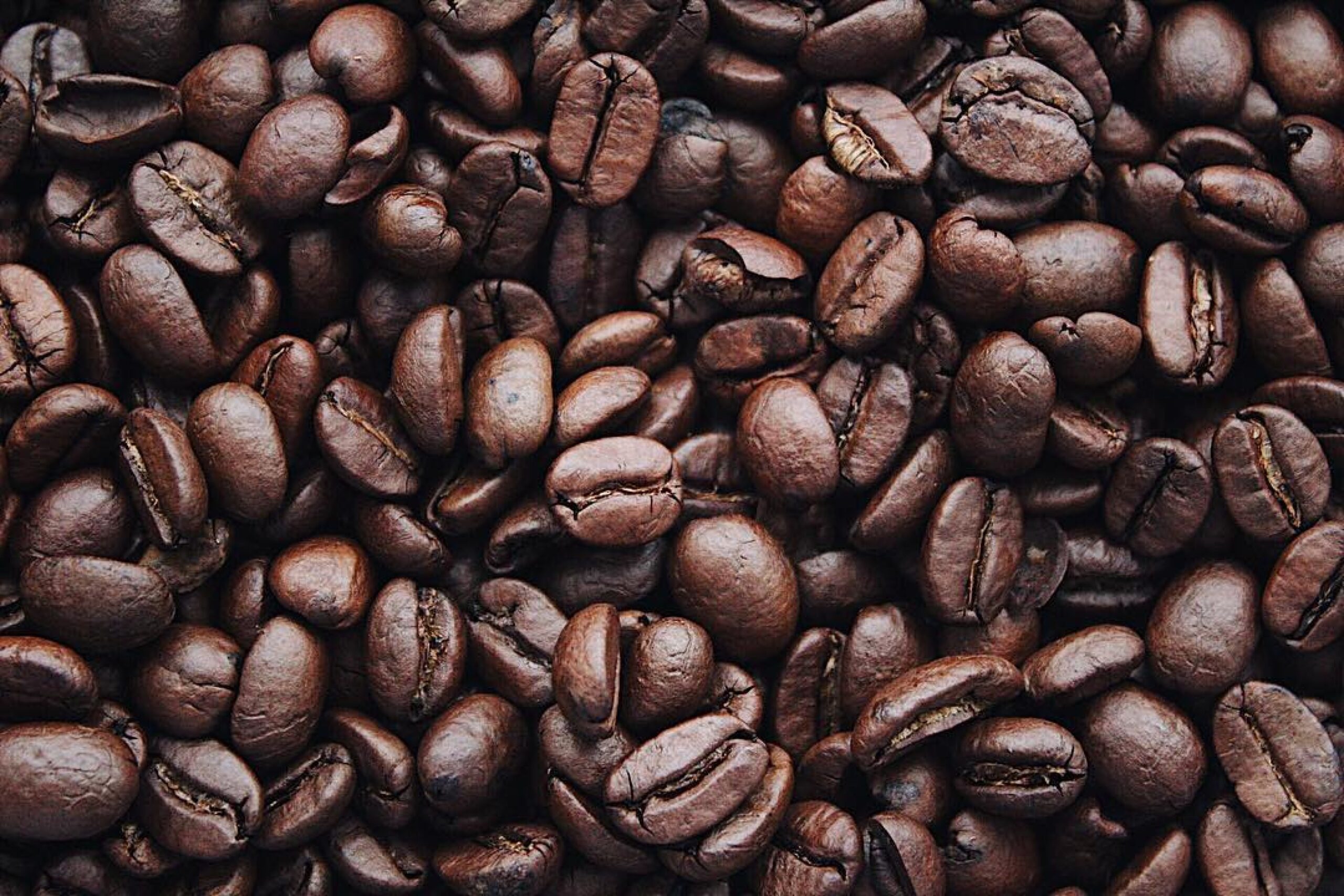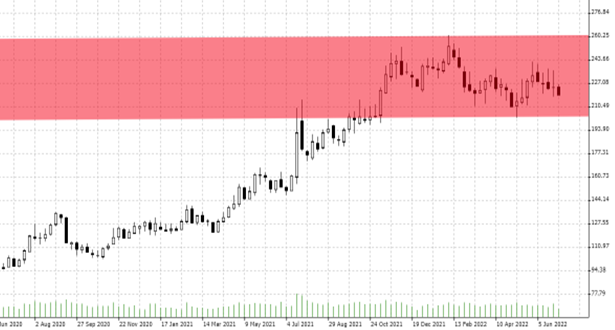

08.07.2022 – No clear trend in coffee prices. Just as with other soft commodities, there is currently a clash between crop yields, rising inflation, the threat of recession, and demand picking up again after the Corona lockdowns. We shed light on the background.
The weekly chart illustrates the indecision in the market. Roughly speaking, the price oscillates between 260 and 200 US cents per pound. The interim bull market, which began after the Corona crisis, seems to have come to a halt for the time being.

Source: Bernstein Bank GmbH
Overall, the macroeconomic environment has recently been rather bearish again. This is because the outlook for the global harvest has improved. For example, in its outlook for the 2022/23 season at the end of June, the U.S. Department of Agriculture (USDA) cited an increase in production of 7.8 million bags year-on-year to around 175 million bags. At the same time, however, global demand would only pick up by 1.8 million 60-kilogram bags to 167 million. So we have a supply overhang.
Brazil decides
As recently as January, the coffee price had been trading at its highest level since 2011 as producers suffered from drought and frost. Brazil in particular, as the largest Arabica producer, was causing concern in the market – fears were rife that crops would be damaged on a large scale, which could influence prices upward for years to come. Arabica beans account for around 60 percent of global coffee production, and the price-determining market is the New York Mercantile Exchange. No wonder, since the world’s dominant coffee-drinking market is the USA.
Easing in Asia
In parallel, exports of the other major variety, Robusta, have eased again – more product is coming onto the market. Weeks ago, high freight rates and faltering trade in the wake of the Corona fallout had caused problems for Vietnam, the largest Robusta exporter. The same was true for India and Indonesia. Robusta is mainly traded on the Intercontinental Exchange in London.
Arabica beans tend to taste fruity, aromatic and less bitter. Robusta are more earthy or nutty. Both varieties influence each other. When the supply of one bean is too low, coffee roasters switch to the other variety.
Tug of war between bulls and bears
So is the coffee price breaking out downward or upward? Or will it stay with the sideways trend? You decide for yourself. In coffee, we find exactly the same price factors at work in all other soft commodities. The market is finding support in the economies that have reopened after Corona – but a new lockdown in the fall could put a damper on demand again. Furthermore, the rapid rise in inflation is bearish on the one hand. Families will save wherever they can – coffee is not a necessary good. Two cups instead of three in the morning are also enough.
At the same time, inflation is also bullish in the short term: farmers pass on the higher costs of fertilizer and transport to the product. The price rises – until demand is stifled. Supporting in the long term is the population explosion. So keep an eye on the real-time news – Bernstein Bank wishes successful trades and investments!
Important Notes on This Publication:
The content of this publication is for general information purposes only. In this context, it is neither an individual investment recommendation or advice nor an offer to purchase or sell securities or other financial products. The content in question and all the information contained therein do not in any way replace individual investor- or investment-oriented advice. No reliable forecast or indication for the future is possible with respect to any presentation or information on the present or past performance of the relevant underlying assets. All information and data presented in this publication are based on reliable sources. However, Bernstein Bank does not guarantee that the information and data contained in this publication is up-to-date, correct and complete. Securities traded on the financial markets are subject to price fluctuations. A contract for difference (CFD) is also a financial instrument with leverage effect. Against this backdrop, CFD trading involves a high risk up to the point of total loss and may not be suitable for all investors. Therefore, make sure that you have fully understood all the correlating risks. If necessary, ask for independent advice. CFDs are complex instruments and are associated with the high risk of losing money quickly because of the leverage effect. 68% of retail investor accounts lose money trading CFD with this provider. You should consider whether you understand how CFD work and whether you can afford to take the high risk of losing your money.7
